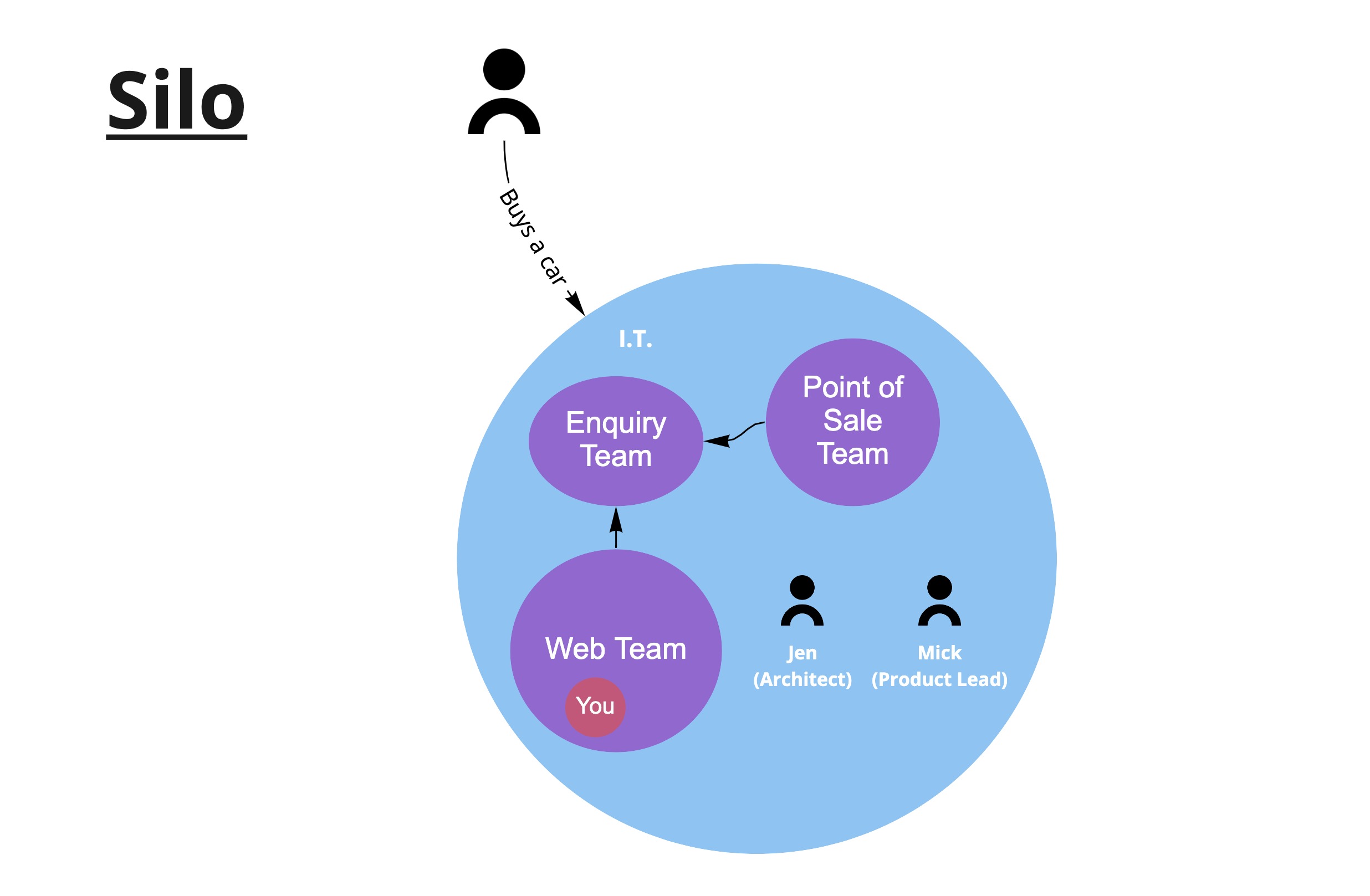Visualising organisation relationships with the 4S model

“People are NOT our greatest asset. In collaborative knowledge work particularly, it’s the relationships BETWEEN people that are our greatest asset.” – Bob Marshall
When you first join a company, you might know your team name, where you sit and where you are in the org chart. But below the org chart is a host of relationships that aren’t formally recognised.
You hopefully already have an onboarding deck you use with new team members. I suggest you adopt a session for this deck which is about understanding how the organisation works, which is usually superficially represented by a hierarchical chart. Instead, we use something focused on the relationships between teams, rather than the boxes they are put in.
With a nod towards Simon Brown’s C4 model, I call this the 4S model for visualising organisation relationships. This model allows you to zoom into your organisation, looking through the layers before explaining where the new person fits in.
The four layers - which make up the four S’s - are:
- System
- Silos
- Silo
- Siblings
Get yourself a whiteboard, some pens and the new person so we can begin the session.
We start at the whole org level and zoom through the organisation until we get to our team in isolation. For each level, we draw the main actors on the whiteboard inside a bubble and drill down into the most relevant bubble each time.
During each stage, you are taking and answering questions to help clarify the relationships with the new person.
So let’s dive in with a fictional car company as an example.
System

We start from the highest point, outside the organisation itself.
- Scope:
- Your organisation from the outside
- Elements:
- One big bubble with your company name
- Your common customer types and their needs
- The current goals of your company
- A marker to say where you are
- Talking points:
- Which company goal relates to them, how they will help to achieve that goal
- A short history of the company
- The relationships with customers and the types of demand they put on the system
- The most significant challenges that the company are facing
Once this stage is complete, we zoom inside this big bubble.
Silos

If you are wondering what a silo is, it’s any other part of your company that you refer to by group name rather then real human names (i.e. HR, IT, the board rather than Keith and Michone).
Ignore other teams in your department at this stage.
- Scope:
- Main departments relevelant to your department (not every department)
- Elements:
- Departments relevant to your department as bubbles
- Relationships between the departments
- A marker to say where you are
- Talking points:
- How departments interact
- Any dependencies between departments
- Any fraught relationships between departments
- Brief history and goals of each department
Now they know the communication flow between departments, we move onto our department (silo).
Silo/Department

- Scope:
- Fellow teams in your department
- Elements:
- Every team as a bubble
- Any management/supporting team within your department along with their names and roles
- Relationships between the teams (say them when drawing arrows)
- Links to internal customers (e.g. back-office order processing team)
- A marker to say where you are
- Talking points:
- How well has the relationship has been going between the other teams in your dept
- How the supporting/management structure operates, how often you will see them
- Any history of teams merging or splitting
- Any existing dependencies for getting work done between teams
Then finally, we get onto the team the new person is joining.
Siblings/Team

- Scope:
- Individuals and their roles in your team
- Elements:
- Every person in your immediate team and their role
- Talking points:
- How long each person has been there
- Relationships between team members
And that should be you.
Remember, at all levels; it’s about the interesting conversation you can have talking about the relationships between parts of the organisation.
Given the nature of explaining relationships and the power within them (like Burja mapping) inherent to the 4S model, I wouldn’t recommend keeping it as a sharable asset, instead recreate the model each time it is needed.
I’ve had great success using this technique when new people join a team as it gives them the context for the essential groups in your company and how your team relates to those groups. Give it a try next time someone joins your team.